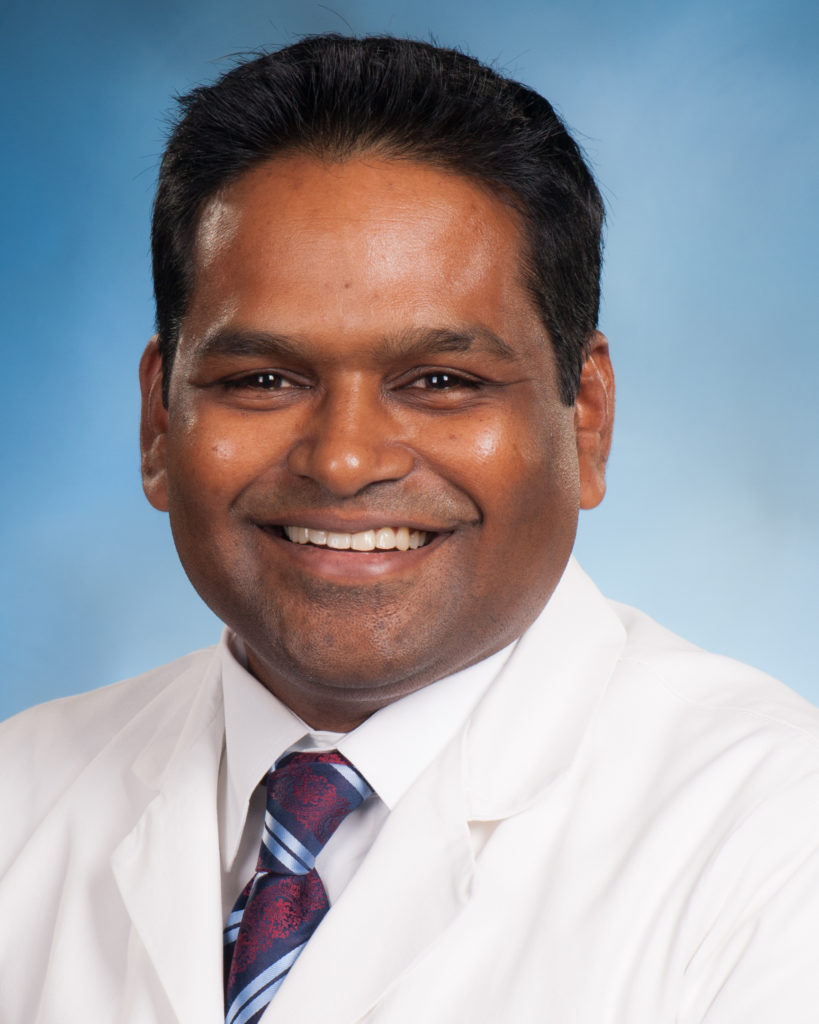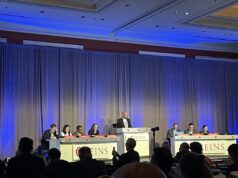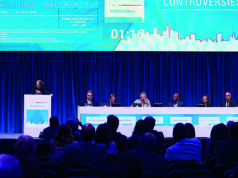
Two-year outcomes of the VeClose pivotal trial have been reported, showing a 94.3% closure rate and “continued non-inferiority results to radiofrequency ablation” when using the VenaSeal cyanoacrylate embolic adhesive closure system (Medtronic). The data were presented by Raghu Kolluri, from OhioHealth Vascular Institute Columbus, USA, at the 2016 VEITHsymposium (15–19 November, New York, USA).
The VenaSeal system comprises of a proprietary formulation of medical cyanoacrylate-based adhesive, with a catheter engineered to be inert to adhesive and to not require the use of tumescent anaesthesia. The adhesive itself is high viscosity, and is used to close the diseased vein being treated.
The system’s performance is being investigated by the VeClose trial—a US multicentre randomised controlled investigational device exemption trial with a non-inferiority approach. The trial is comparing the VenaSeal to radiofrequency ablation (RFA; ClosureFAST, Medtronic) in treating lower extremity truncal reflux. The trial has enrolled 242 patients (20 roll-in and 222 randomised) at 10 study sites, and will follow these patients out to 36 months.
Baseline patient characteristics were similar between the two groups. Of these characteristics, Kolluri noted that mean age was 49 years in the VenaSeal group and 50.5 year in the radiofrequency group (p=0.34), mean VCSS (Venous Clinical Severity Score) was 5.5±2.6 in the VenaSeal group and 5.6±2.6 in the radiofrequency group (p=0.99), and mean treatment length was 32.8cm in the VenaSeal group and 35.1cm in the radiofrequency group (p=0.17).
Previously published data (Morrison et al) for the rate of great saphenous vein closure at three months showed similar outcomes between the two groups. Complete occlusion was achieved in 99% (n=103) of VenaSeal patients and 95.4% (n=108) radiofrequency patients. For the roll-in group, complete occlusion was achieved in all patients (n=19).
At 24 months, Kolluri reported a closure rate of 94.3% (n=87) in the VenaSeal group and a rate of 94% (n=84) for the radiofrequency group. There was “a significant drop” for VCSS immediately after treatment, and “both treatments maintain this improvement through 12 and 24 months,” Kolluri said. “Similarly, the AVVQ (Aberdeen Varicose Vein Questionnaire) results showed that patients showed statistically significant improvement over time, but with no difference between the treatment groups,” Kolluri added. Quality of life scores, judged by EQ5D outcomes, were also “improved significantly from baseline at all time points and across all subjects,” the audience was told, while there was no statistically significant difference between treatment groups for CEAP status, with “more patients shifting to a lower class of score,” Kolluri explained.
There were three adverse events reported in the VenaSeal group between 12 and 24 months, all of “uncertain cause” in the form of erythema in the medial thigh at both 12- and 24-month endpoints, in one patient patient and shin pain for another patient.
Moving on to secondary endpoints, Kolluri reported, “Procedural pain scores were quite similar and quite low in both groups,” Kolluri said, noting that the low scores may reflect operator and selection bias. Intraoperative pain scores during vein access were 1.6 for the VenaSeal group and 2.4 for the RFA group (p=0.13). During treatment, pain score for the VenaSeal group was 2.2 and for RFA was 2.4 (p=0.11). Tumescent anaesthesia volume in the RFA group was 272mL compared to 0mL in the VenaSeal group, while the cyanoacrylate delivered in the adhesive group was 1.2mL. Lidocaine use during the procedure was 1.6mL for the VenaSeal group and 2.7mL for the RFA group (p=0.1).
The doses of non-steroidal anti-inflammatory drugs and other narcotics administered within the first 24 hours were similar for both groups, the most common of which was ibuprofen, administered for 15.7% (n=17) of VenaSeal patients and 19.3% (n=22) of radiofrequency patients (n=0.6). No medication was used for 79.6% (n=86) of VenaSeal patients and 78.9% (n=90) of radiofrequency patients.
Neither group had large amounts of ecchymosis, though its incidence was less in the VenaSeal group compared to radiofrequency at three days (p<0.01).
Summarising his presentation, Kolluri told the audience that these were “good results,” with “good patient-reported outcomes and no reports of deep vein thrombosis.” One major advantage of VenaSeal treatment, he continued, is the simple and consistent process involved. However, Kolluri did note that the treatment is not currently covered by insurance or Centers for Medicare & Medicaid Services, although hopefully this will change in 2018.









